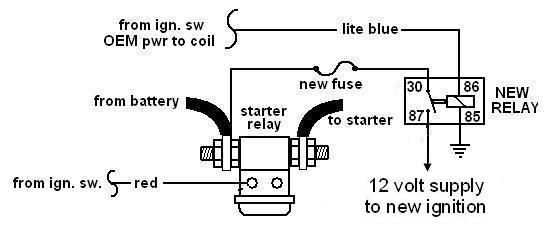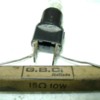I had the same problem with my car when I installed the new GM alternator. I found that stepping on the brake drew enough voltage that the engine would shut off. But, John Buckman correctly diagnosed my issue (below).
quote:
The problem is that the alternator is supplying enough voltage via the warning light to keep the relay's contacts closed.
This is due to the warning light AND the ignition (relay coil) both being connected to the RUN terminal of the ignition switch.
With the Bosch/Tyco type relays, once the relay coil is energized, it will remain energized until the voltage drops below 2 volts (usually around 1.2 volts).
As Joe (JFB) suggested, adding a diode in series with the charge indicator light's wire should solve the problem. The diode's "banded" end points towards the alternator.
Here's the specific info John sent me that solved my problem. The diode (Radio Shack P/N 276-1143) is installed in SERIES with the wire for the warning light (alternator's #1 terminal), with the diode's "band" toward the alternator (i.e. the wire that you attach to the banded end of the diode goes to the alternator, and the non-banded end goes to the warning light).
As an FYI when selecting a diode, you want the voltage to be at least 3 times the operating voltage of the system, and the current rating (amps) of the diode should be at least 1.5 times the current that the diode will normally see when installed.




